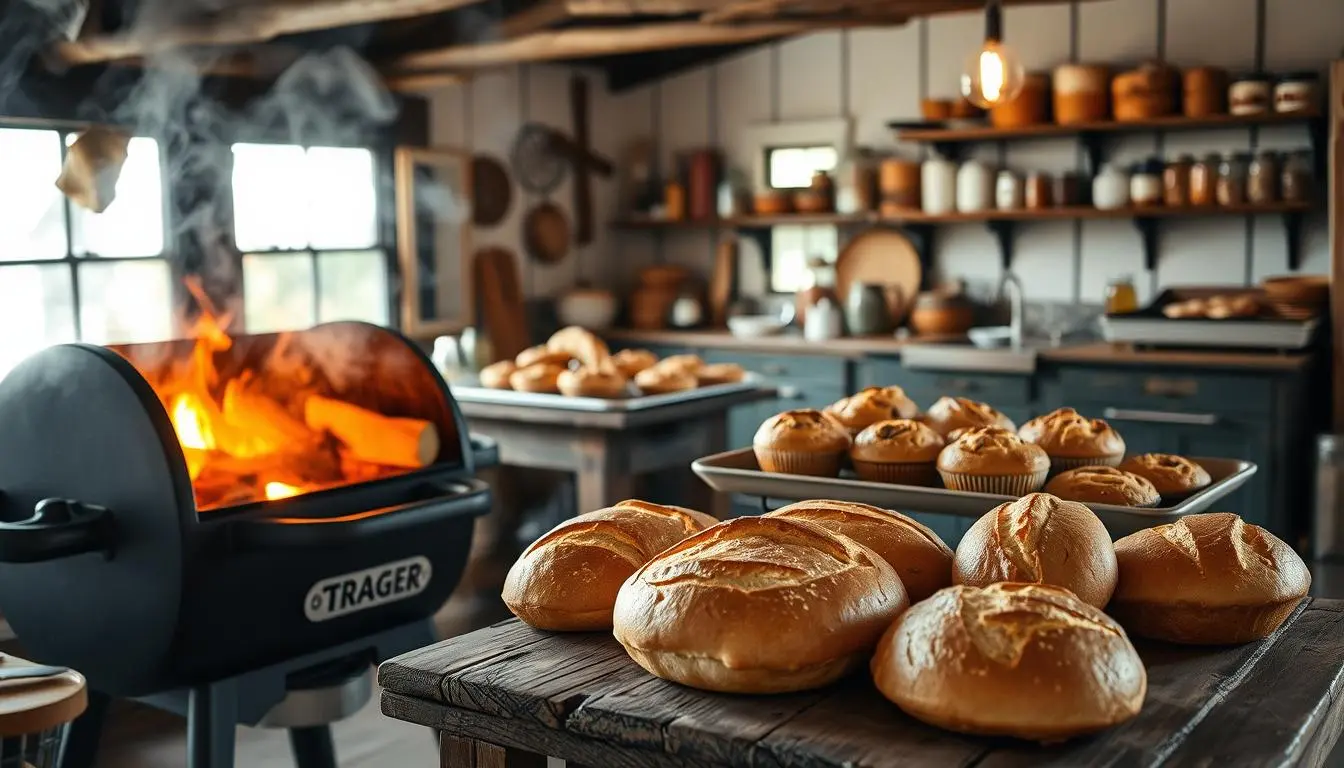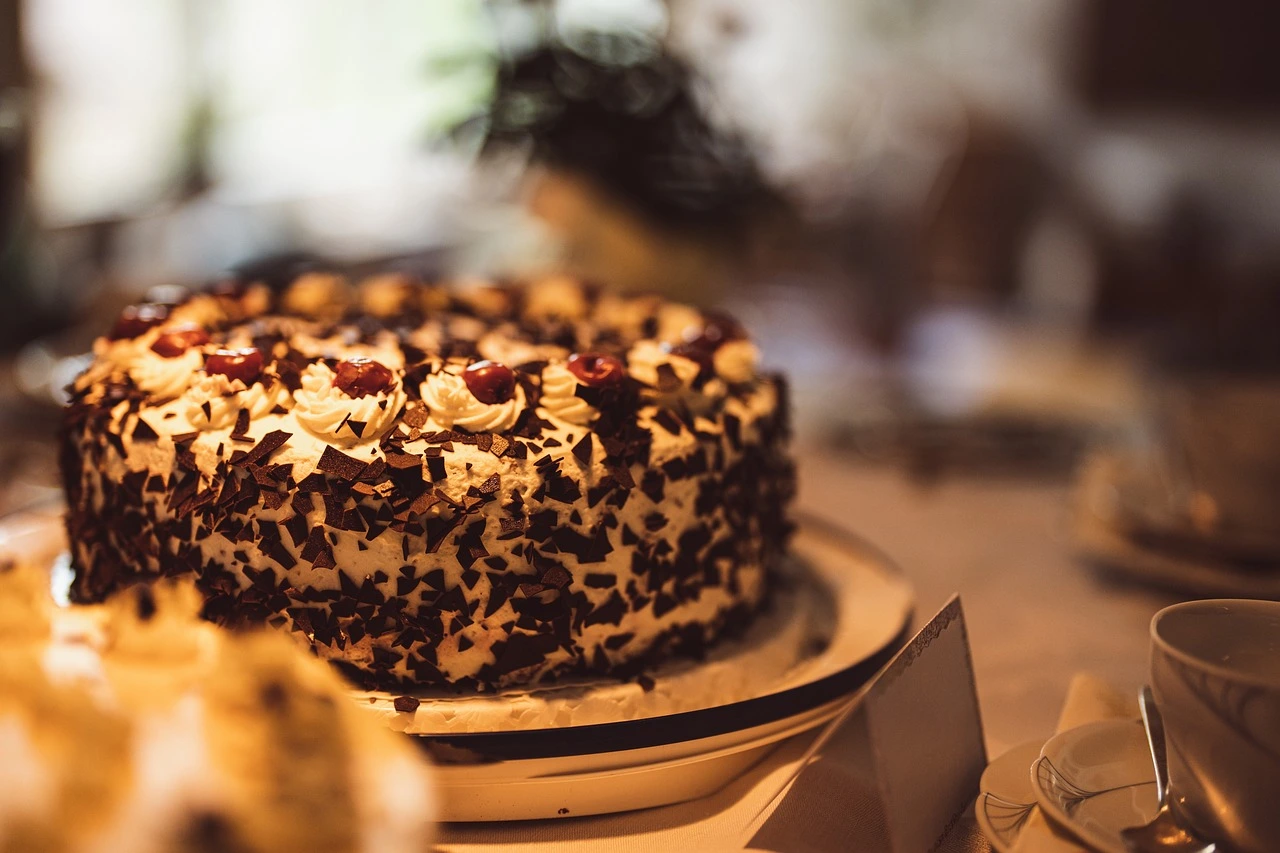Table of Contents
There’s something magical about the tangy aroma of sourdough quick bread recipes wafting through your kitchen—that perfect balance of rustic comfort and artisanal flavor without the hours of waiting. As someone who juggles a busy schedule but refuses to compromise on homemade goodness, sourdough quick breads have become my secret weapon for impressive, flavorful baking without the traditional time investment.
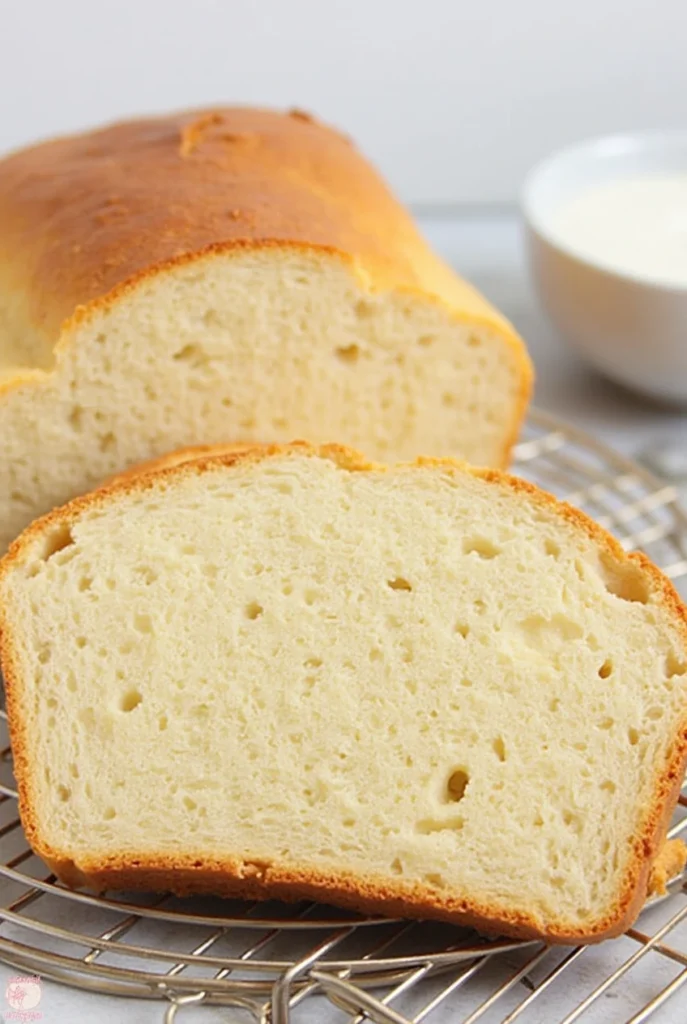
Ingredients List
Creating delicious sourdough quick breads requires just a handful of pantry staples, making them perfect for spontaneous baking sessions. Here’s what you’ll need for a basic sourdough quick bread that you can customize to your taste:
- 1 cup active or discard sourdough starter (room temperature)
- 2 cups all-purpose flour (substitute up to half with whole wheat for heartier texture)
- 1/4 cup granulated sugar (honey or maple syrup work beautifully too)
- 1 teaspoon baking powder
- 1/2 teaspoon baking soda
- 1 teaspoon salt (sea salt adds a lovely dimension)
- 1/4 cup unsalted butter, melted (coconut oil creates a wonderful alternative)
- 2 large eggs, lightly beaten
- 1/2 cup milk (plant-based milks like almond or oat milk work wonderfully)
- Optional add-ins: 1 cup of mix-ins like nuts, dried fruits, chocolate chips, or herbs and cheese for savory versions
The beauty of these ingredients lies in their adaptability—your sourdough starter brings that signature tang while the other components can be adjusted based on what’s available in your pantry or dietary preferences.
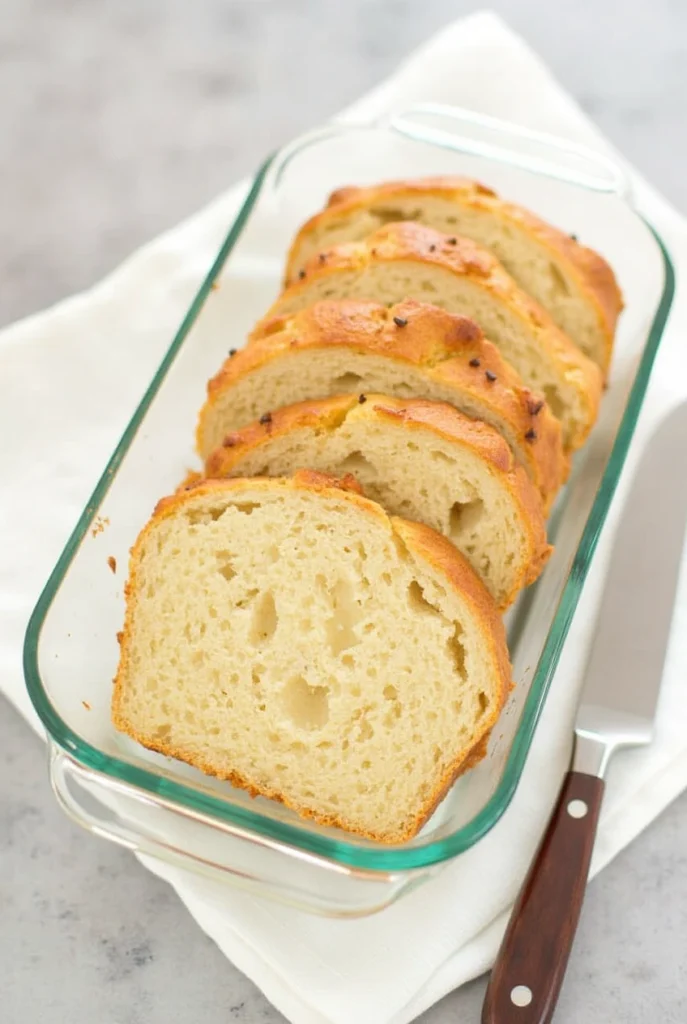
Timing
One of the greatest advantages of sourdough quick bread recipes is right there in the name—they’re quick! Unlike traditional sourdough bread that requires hours or even days of fermentation:
- Preparation time: 15 minutes (60% faster than traditional sourdough bread)
- Baking time: 45-50 minutes
- Total time: About 1 hour (compared to 12+ hours for traditional sourdough recipes)
This efficiency makes sourdough quick breads perfect for weekend mornings or weeknight baking when you crave homemade goodness without the extended commitment. You’ll have fresh, warm bread on the table in just about the time it takes to watch an episode of your favorite show.
Step-by-Step Instructions
Step 1: Prepare Your Space and Ingredients
Preheat your oven to 350°F (175°C) and generously grease a standard 9×5-inch loaf pan. For easy removal, consider lining it with parchment paper with overhanging sides. Gather all your ingredients and bring refrigerated items like eggs and starter to room temperature—this simple step promotes better mixing and more consistent rising.
Step 2: Mix the Dry Ingredients
In a large bowl, whisk together the flour, sugar, baking powder, baking soda, and salt. This uniform distribution ensures your sourdough quick bread rises evenly and has a consistent flavor throughout. If you’re adding dried herbs or spices, incorporate them here to allow their flavors to bloom uniformly.
Step 3: Combine the Wet Ingredients
In a separate medium bowl, whisk together your sourdough starter, melted butter, eggs, and milk until smooth and well incorporated. The starter should be at room temperature to prevent the melted butter from solidifying when they meet. Your mixture should look creamy and have a consistent texture throughout.
Step 4: Create Your Batter
Make a well in the center of your dry ingredients and pour in the wet mixture. Fold gently with a spatula using no more than 10-12 strokes. The secret to tender quick bread is minimal mixing—stop when you still see a few streaks of flour. Overmixing activates gluten, which can make your bread tough rather than tender.
Step 5: Add Your Customizations
If you’re including mix-ins like nuts, dried fruit, or chocolate chips, fold them in now with just 2-3 additional strokes. For savory variations, this is where you’d incorporate cheese, olives, or sun-dried tomatoes. The beauty of sourdough quick bread recipes is their versatility—you can create endless variations from one base recipe.
Step 6: Bake to Perfection
Transfer your batter to the prepared loaf pan, smoothing the top gently. For an artisanal touch, sprinkle the surface with oats, seeds, or a light dusting of flour. Bake for 45-50 minutes, or until a toothpick inserted into the center comes out clean with a few moist crumbs. If the top browns too quickly, tent with aluminum foil after 30 minutes.
Step 7: Cool and Enjoy
Allow your sourdough quick bread to cool in the pan for 10 minutes before transferring to a wire rack to cool completely. This resting period is crucial—it allows the interior structure to set and makes slicing cleaner. For the best flavor experience, try a slice while it’s still slightly warm, when the contrast between the crisp crust and tender interior is most pronounced.
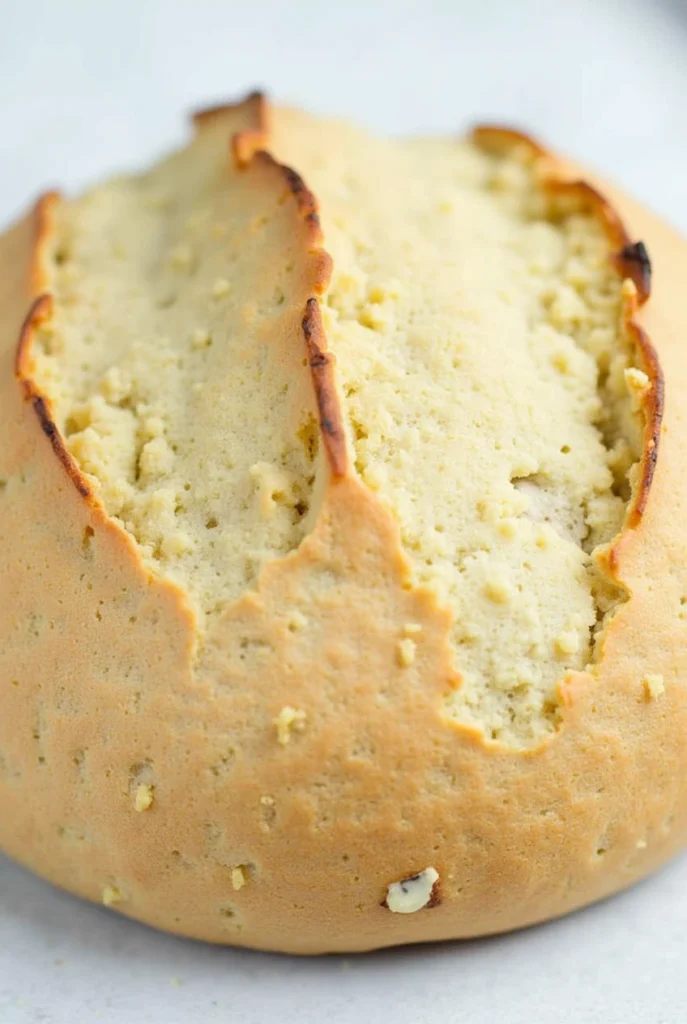
Nutritional Information
Understanding the nutritional profile of your sourdough quick bread helps you make informed choices about how it fits into your diet. Below are approximate values for a standard slice (based on 12 slices per loaf):
- Calories: 180-210 per slice
- Protein: 4-5g
- Carbohydrates: 30-35g
- Dietary Fiber: 1-2g
- Sugars: 6-8g
- Fat: 5-7g
- Sodium: 200-250mg
The fermentation process in sourdough starter makes nutrients more bioavailable and can make the bread easier to digest for some people compared to regular quick breads. Your sourdough starter contributes beneficial bacteria that begin breaking down the flour, potentially making it more digestible.
Healthier Alternatives for the Recipe
Creating a healthier version of sourdough quick bread is simple with these smart substitutions:
- Replace all-purpose flour with white whole wheat flour or a blend of whole grain flours for increased fiber and nutrients
- Reduce sugar to 2-3 tablespoons and enhance sweetness with mashed banana or unsweetened applesauce
- Use Greek yogurt in place of some or all of the butter for added protein and reduced fat
- Incorporate ground flaxseed or chia seeds (2-3 tablespoons) for omega-3 fatty acids and additional fiber
- For lower carb versions, substitute up to 25% of the flour with almond or coconut flour (note: you may need to adjust liquid quantities)
These modifications maintain the delicious flavor and texture while boosting the nutritional profile. Experiment with one substitution at a time to find your perfect balance of health and taste.
Serving Suggestions
Elevate your sourdough quick bread experience with these serving ideas that complement the distinctive tang:
- Slice warm and serve with cultured butter and honey for a simple, elegant breakfast
- Toast slices and top with mashed avocado, microgreens, and a poached egg for a satisfying brunch
- Create gourmet sandwiches with layers of artisanal cheese, thinly sliced apple, and arugula
- Cube day-old bread for homemade croutons or the base of a rustic bread pudding
- Serve alongside homemade soups or stews, where the tangy flavor creates a perfect contrast
For special occasions, try a bread board featuring slices of different variations of your sourdough quick breads (herb, fruit, nut) alongside quality cheeses, preserves, and honey—an impressive yet effortless entertaining option.
Common Mistakes to Avoid
Even simple recipes have potential pitfalls. Here are the most common mistakes when making sourdough quick bread recipes and how to avoid them:
- Using cold ingredients: Always bring your starter, eggs, and milk to room temperature for better incorporation and more consistent rising.
- Overmixing the batter: This develops gluten and results in tough, dense bread. Mix just until ingredients are barely combined.
- Opening the oven door too early: This causes temperature fluctuations that can lead to uneven rising or collapse. Wait until at least 30 minutes into baking before checking.
- Under-measuring your sourdough starter: The starter provides both flavor and leavening. Measure precisely for consistent results.
- Skipping the cooling period: Cutting into bread too soon can make it gummy and dense. Allow proper cooling for the best texture.
According to baking experts, overmixing is the number one reason for tough quick breads, with approximately 80% of texture issues stemming from this simple mistake. Remember: lumps are your friends in quick bread batters!
Storing Tips for the Recipe
Proper storage extends the life of your sourdough quick bread and maintains its quality:
- Room temperature: Store completely cooled bread wrapped in a clean kitchen towel or paper bag for 1-2 days to maintain the crisp crust.
- Refrigeration: Wrap tightly in plastic wrap or store in an airtight container for up to 5 days. Bring to room temperature or toast before serving for best flavor.
- Freezing: Wrap individual slices or whole loaves in plastic wrap, then aluminum foil, and freeze for up to 3 months. Label with the date and variety for easy identification.
- Pre-slicing before freezing allows you to take just what you need without thawing the entire loaf.
- Refresh day-old bread by lightly toasting or warming in a 300°F oven for 5-10 minutes.
For maximum flavor preservation, avoid storing sourdough quick bread in the refrigerator unless necessary, as the cold temperature can accelerate staling despite extending shelf life.
Conclusion
Sourdough quick bread recipes offer the perfect balance of convenience and artisanal flavor for busy bakers. With simple ingredients, minimal active time, and endless customization options, these tangy, tender loaves deliver sourdough satisfaction without the wait. We’d love to hear how your sourdough quick bread adventures turn out! Leave a comment sharing your favorite variations, subscribe for more sourdough inspiration, or tag us in your baking photos to join our community of passionate home bakers.
FAQs
Can I use inactive or discard sourdough starter for quick breads? Absolutely! Quick breads are the perfect use for sourdough discard since they rely on baking powder and soda for leavening. The starter primarily contributes flavor rather than rise in these recipes.
Why is my sourdough quick bread dense or gummy in the middle? This usually indicates underbaking or opening the oven door too early. Use the toothpick test and ensure it comes out clean before removing from the oven. Also check that your baking powder and soda are fresh.
How tangy will my bread taste using sourdough starter? The tanginess depends on your starter’s maturity and how recently it was fed. Older discard produces a more pronounced sour flavor, while recently fed starter gives a milder tang. Adjust to your preference!
Can I make these recipes dairy-free or vegan? Definitely! Replace dairy milk with any plant-based alternative, use coconut oil or vegan butter instead of dairy butter, and substitute each egg with either 1/4 cup applesauce.
My sourdough starter isn’t very active—will quick bread still work? Yes! Unlike traditional sourdough bread, quick breads don’t rely on starter activity for rising. Even completely inactive starter adds wonderful flavor and can be used successfully in these recipes.
How can I make my quick bread more nutritious without sacrificing taste? Try gradually increasing the whole grain flour ratio (up to 50%), reducing sugar by 25%, and incorporating nutrient-dense add-ins like ground flaxseed, nuts, or dried fruits. These changes enhance nutrition while maintaining delicious flavor and texture.





